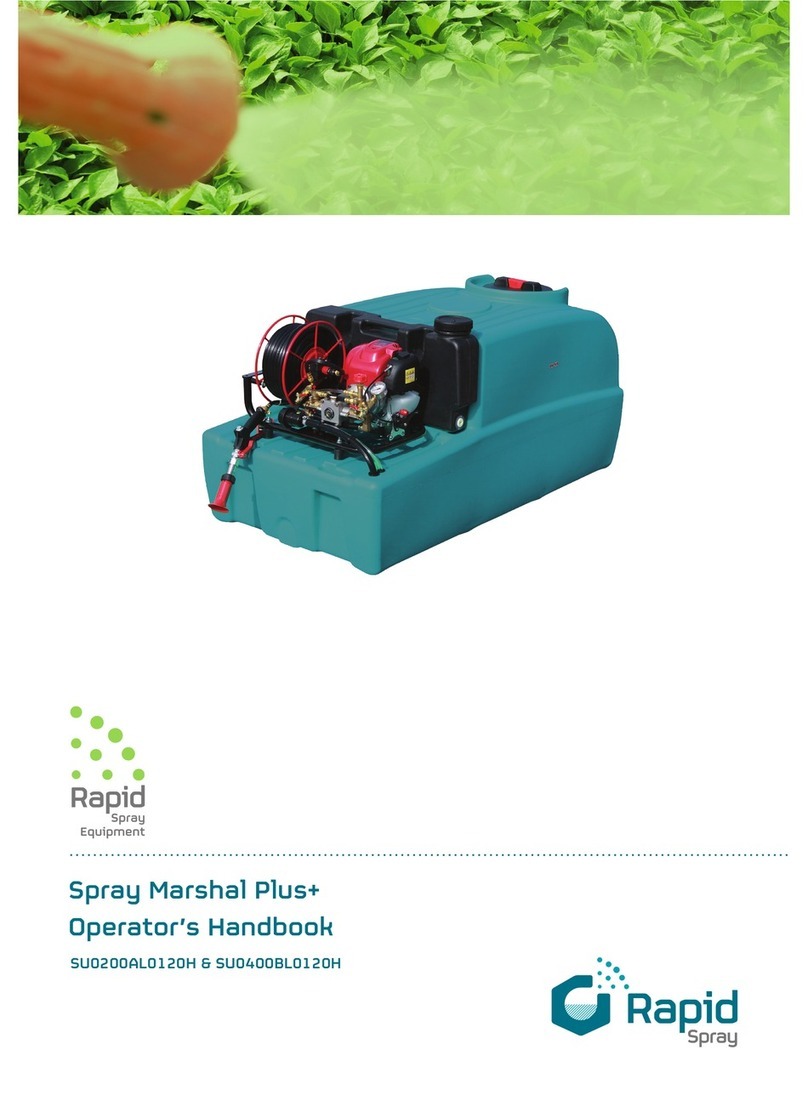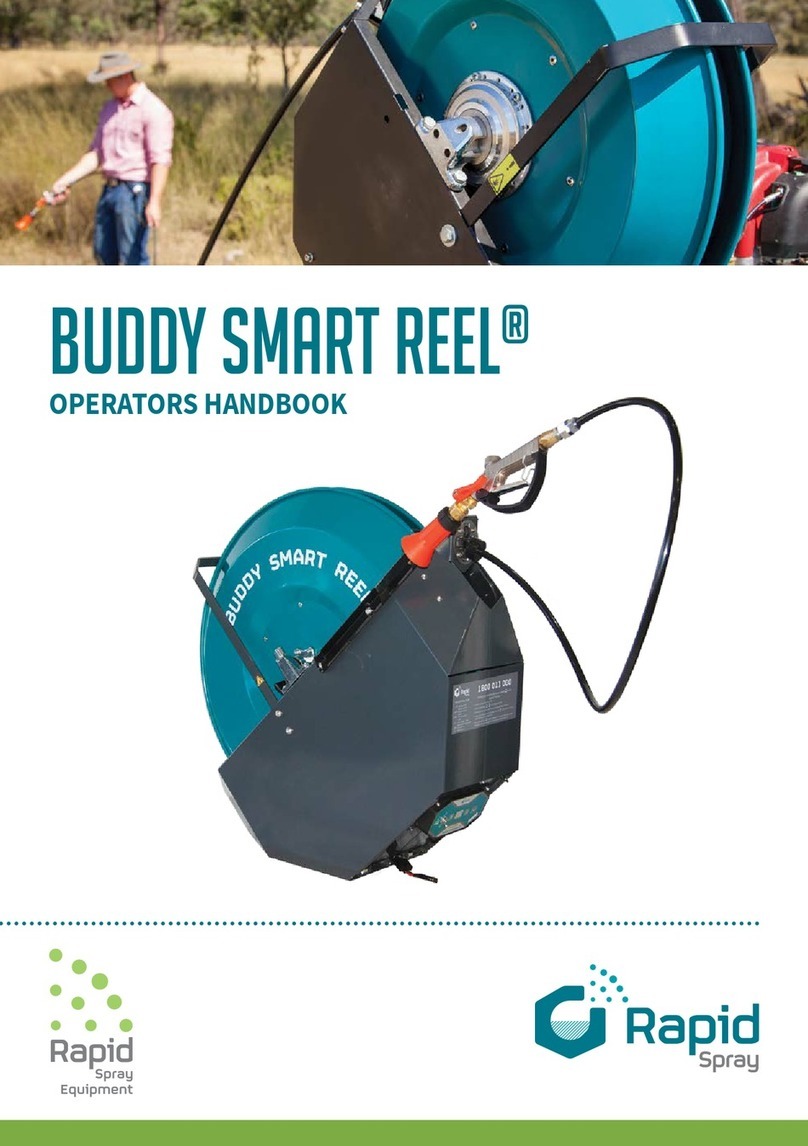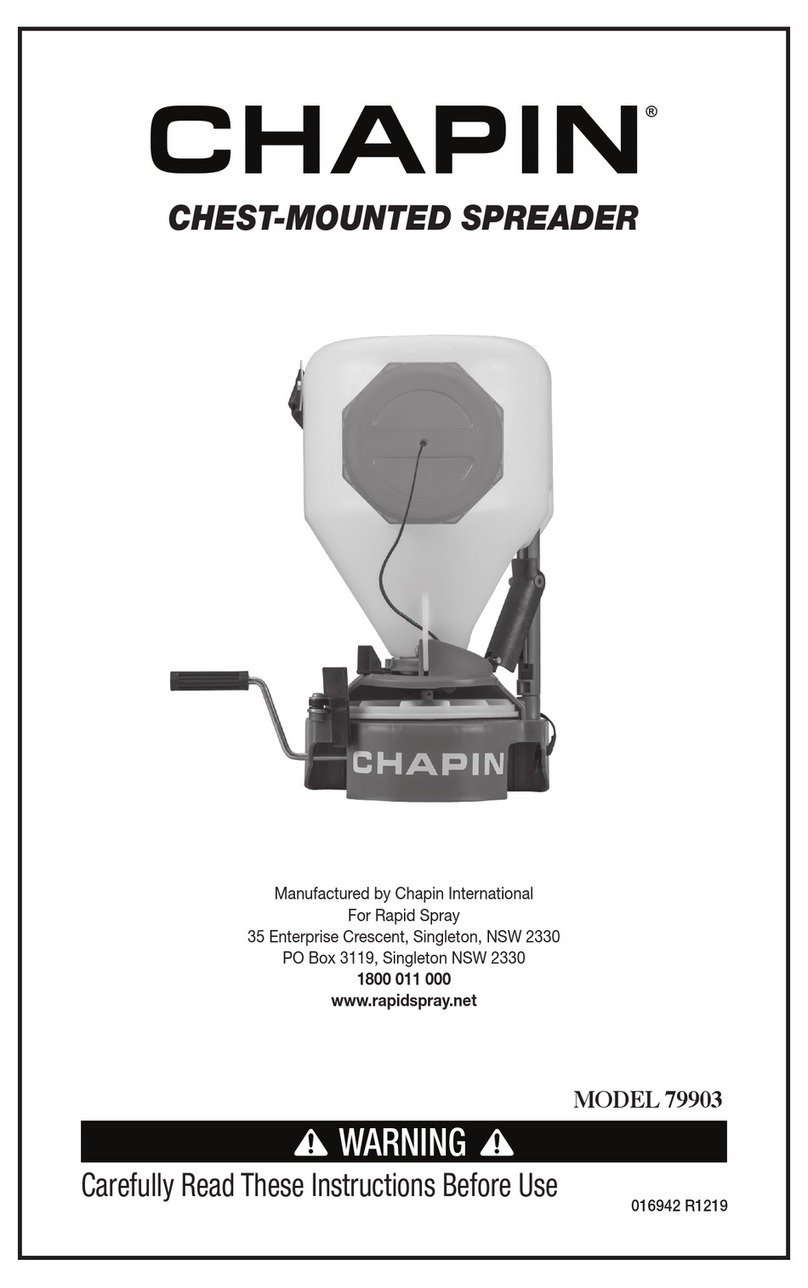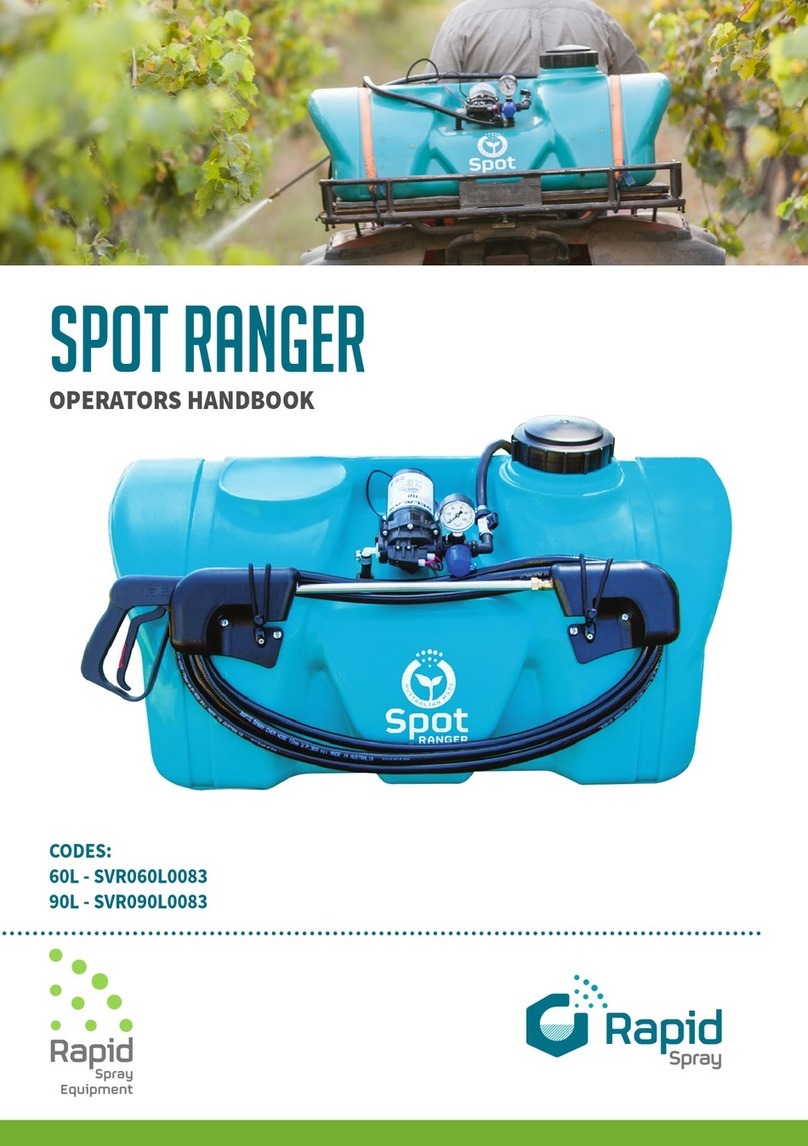
Compact Field Sprayers by Rapid Spray
Rapid Spray Marshal Pro Operators Handbook2
WARNINGS
1. When mounting to any vehicle, ensure that you have read the Vehicle Owner’s Manual and
that you comply with all the weight restrictions as specified by the vehicle manufacturer,
as overloading can cause injury or death. Remember that one litre of water weighs one
kilogram. Ensure equipment is secure during transport.
2. To ensure your own safety and that of your employees or colleagues (if applicable) you
must comply with all relevant environmental, work place health and safety legislation and
codes of practice.
3. You must be in good mental health to operate this sprayer and not be under the influence of
alcohol or any drugs that could impair your vision, physical strength, dexterity, judgment or
other mental capacity.
4. Improper or careless use of this sprayer can cause serious injury. Minors should never be
allowed to use this sprayer. This sprayer should not be used when bystanders or animals
are in the area. This sprayer should never be used while children are in the area.
5. Before spraying, check the electrical and fuel systems for damage and deterioration.
Replace parts as necessary. Do not modify the equipment or use any attachments other
than those specified by the manufacturer.
6. Select and wear appropriate Personal Protective Equipment (PPE) in accordance with the
label of the product you intend on using and your own safe work practices. PPE must still
be worn while decontaminating your sprayer. Any accidental spills on the skin must be
immediately be washed with clean water and soap.
7. Turn o the engine before filling the chemical tank. Spray during the morning or evening
when it is cool. Intense sunlight will condense chemicals and may cause damage. Care
should be taken when spraying in windy conditions as spray dri may contaminate the air
and may aect the operator or damage adjacent non-target vegetation.
8. Spray only in well ventilated areas to keep away from flames or cigarettes. Keep all hoses
and equipment away from the hot engine to avoid fire hazards.
9. Do not eat, drink or smoke while spraying to avoid ingestion of chemicals. Do not carry or
store lunch boxes or other food and drink with spraying equipment.
10. Once the spraying operation has been completed, decontaminate the spray tank and spray
accessories. Store any remaining chemicals in a safe place in a sealed container. Dispose
of tank rinsing in compliance with the current environmental, work place health and safety
regulations.
11. Never leave the sprayer unattended without turning o the engine and relieving the line
pressure, and flushing the sprayer of any harmful chemicals.
12. Carry out maintenance as per the recommendations. Ensure that the unit is cool and
securely stabilised on a level surface before commencing maintenance.
Read all warnings below and obey any instruction stickers or warnings on the spray unit.
Failure to do so may result in serious bodily harm or death.

































